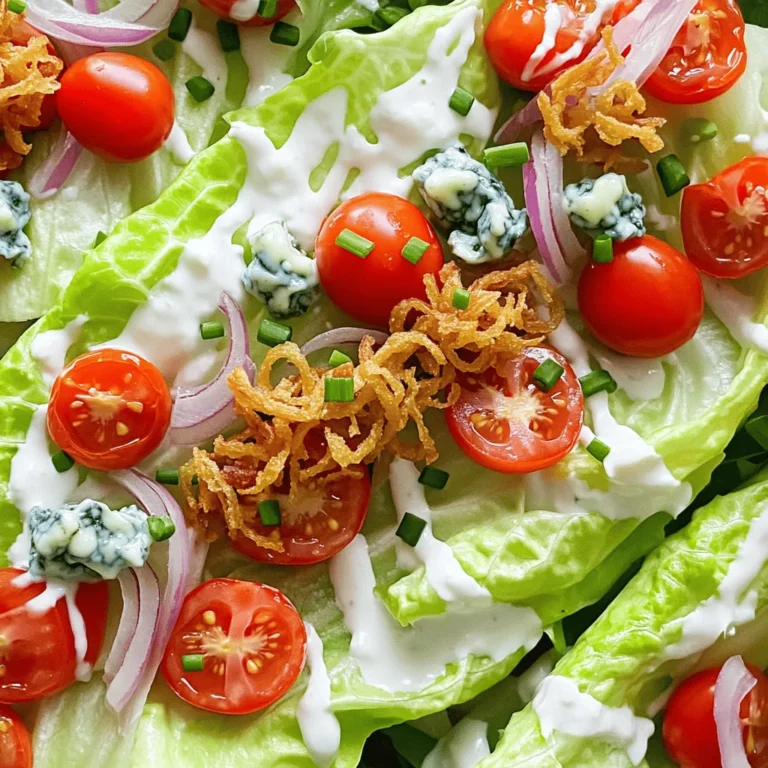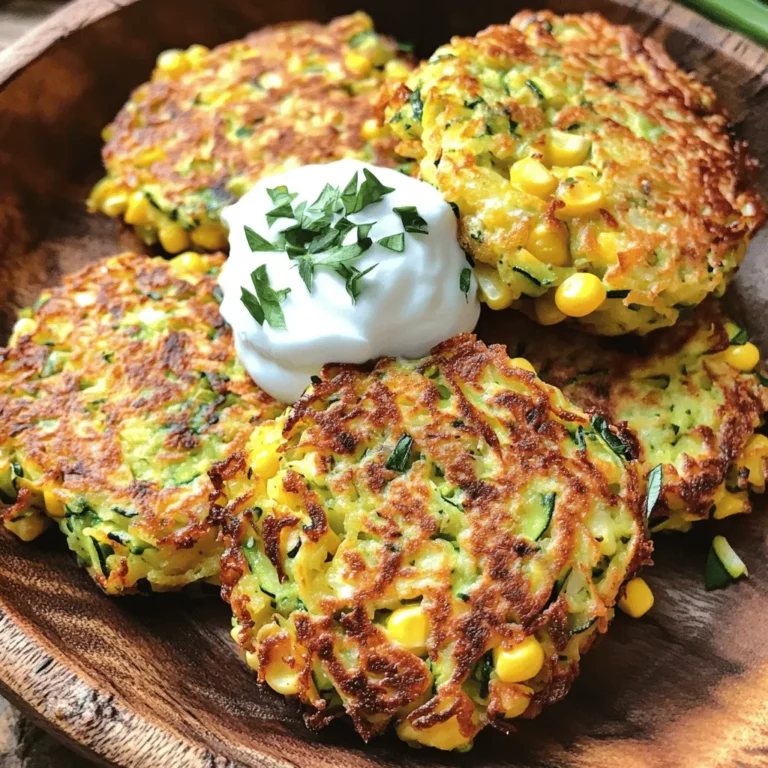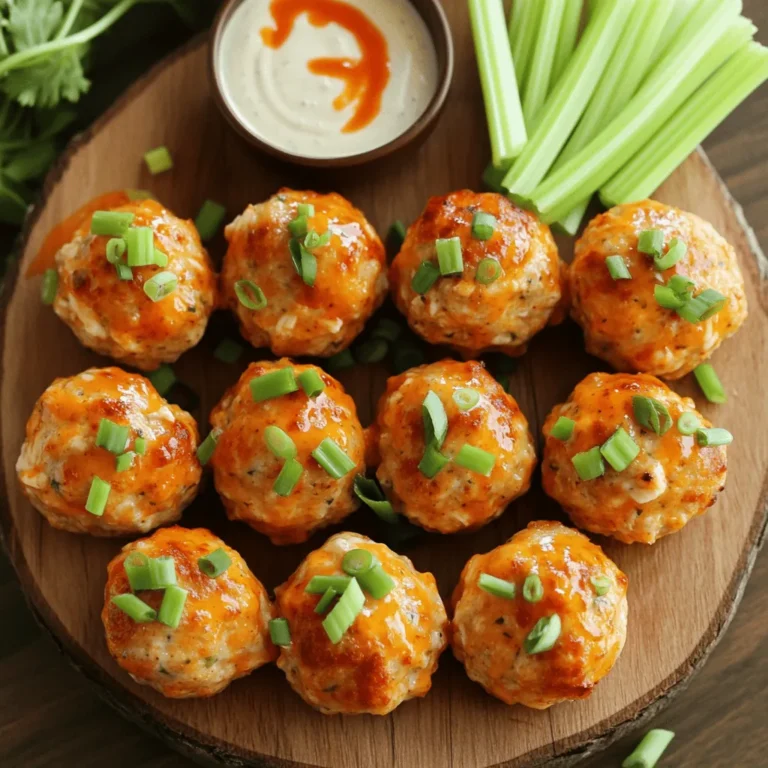Lemon Garlic Shrimp Skewers Quick and Tasty Dish

Looking for a quick and tasty dish that’s full of flavor? Let me introduce you to my Lemon Garlic Shrimp Skewers! This dish is simple to prepare and perfect for any meal, from a summer BBQ to a cozy dinner at home. With fresh shrimp, zesty lemon, and savory garlic, these skewers will delight your taste buds. Ready to learn how to make this easy recipe? Let’s dive right in!
Ingredients
Main Ingredients
- 1 lb large shrimp, peeled and deveined
- 3 tablespoons extra virgin olive oil
- Zest and juice of 2 fresh lemons
- 4 cloves garlic, finely minced
Spices and Seasonings
- 1 teaspoon red pepper flakes
- 1 teaspoon smoked paprika
- Salt and black pepper, to taste
For Garnishing
- Fresh parsley, finely chopped
- Skewers (wooden or metal, soak wooden skewers in water for at least 30 minutes)
To make these lemon garlic shrimp skewers pop, you need fresh and quality ingredients. The star of the show is the shrimp, which should be large and juicy. The olive oil brings richness and helps the flavors stick. Fresh lemons add bright zest and tang. Garlic gives a warm and savory flavor.
The spices give this dish a kick. Red pepper flakes add heat, while smoked paprika adds depth. Salt and black pepper enhance everything, making it all come together.
For a finishing touch, fresh parsley adds color and freshness. Don’t forget about the skewers! If you use wooden skewers, soaking them in water prevents burning.
Step-by-Step Instructions
Preparing the Marinade
To make the marinade, take a medium mixing bowl. In this bowl, combine:
- 3 tablespoons extra virgin olive oil
- Zest and juice of 2 fresh lemons
- 4 cloves garlic, finely minced
- 1 teaspoon red pepper flakes
- 1 teaspoon smoked paprika
- Salt and black pepper, to taste
Whisk all the ingredients well until they blend into a smooth mixture. The olive oil and lemon juice create a bright flavor that enhances the shrimp.
Marinating the Shrimp
Next, add 1 pound of peeled and deveined shrimp to the marinade. Make sure each shrimp is coated well. Use a spoon or spatula for this. Cover the bowl with plastic wrap. Place it in the fridge for at least 30 minutes. This step allows the shrimp to soak in all the zesty flavors.
Grilling Process
While the shrimp marinate, preheat your grill or grill pan to medium-high heat. This ensures that the shrimp cook evenly and get a nice char. After marinating, remove the shrimp from the fridge. Thread them onto skewers, leaving a little space between each one. This helps them to cook well without steaming.
Once your grill is hot, place the skewers on it. Grill the shrimp for about 2-3 minutes on each side. Look for a vibrant pink color and a firm texture. Avoid cooking them too long; overcooked shrimp can become tough.
After grilling, take the skewers off the heat. Let them rest for about 1 minute. This helps the juices soak back into the shrimp. For a final touch, sprinkle with finely chopped parsley before serving.
Tips & Tricks
Cooking Tips
To prevent overcooking shrimp, watch the color closely. Shrimp turn pink when done. Cook them for just 2-3 minutes per side. If they curl tightly, they may be overcooked. Marinate your shrimp for at least 30 minutes. This lets the flavors soak in and makes them tasty. Keep your marinade cold while the shrimp soak. This keeps them fresh.
Grilling Safety
If you use wooden skewers, soak them in water for 30 minutes. This helps prevent burning on the grill. When grilling, keep your grill at medium-high heat. This ensures even cooking and a nice char. Always keep an eye on your shrimp. They can cook quickly and need your attention.
Presentation Tips
For a stunning display, serve the skewers on a large platter. Add lemon wedges for a splash of color and flavor. A small drizzle of olive oil adds shine, too. Sprinkle fresh parsley over the skewers before serving. This adds a pop of green and freshness. For an extra touch, you can arrange them in a circle or on a bed of greens to impress your guests.

Variations
Alternative Ingredients
You can swap shrimp for other proteins. Try chicken or tofu for a twist. Each option brings a unique flavor. You can even use fish like salmon. For garlic, try shallots or garlic powder. Both add nice depth without overpowering the dish.
Flavor Enhancements
Herbs can brighten this dish. Fresh basil or cilantro adds a great touch. You can also add citrus zest, like lime or orange, for a fruity kick. Flavor-infused oils work wonders too. Try using garlic or chili oil for added taste. Marinades can change the flavor game. Mix in a splash of soy sauce or honey for a sweet touch.
Serving Styles
These skewers shine in many meals. Serve them in soft tacos with fresh veggies. Toss them on a salad for a light meal. You can also serve them over rice or quinoa for a filling dish. Add a squeeze of lemon on top for extra zing! For a fun twist, serve with a dipping sauce like spicy mayo or garlic aioli.
Storage Info
Storage Directions
To store leftover shrimp skewers, let them cool first. Place them in an airtight container. Store them in the fridge for up to 2 days. For longer storage, you can freeze them. Wrap each skewer in plastic wrap and then place them in a freezer bag. This helps keep them fresh.
Reheating Suggestions
When you reheat, use a skillet or your grill. Heat a bit of oil over medium heat. Place the skewers in the pan or on the grill for about 1-2 minutes per side. This method keeps the shrimp juicy and flavorful. Avoid using the microwave, as it can make them rubbery.
Shelf Life
Shrimp skewers stay tasty for 2 days in the fridge. If you freeze them, they can last for about 3 months. However, for the best flavors, try to eat them within a month. Always check for any off smells or changes in color before eating. Enjoy your shrimp skewers fresh for the best taste!
FAQs
How do I know when shrimp are cooked?
Perfectly cooked shrimp have a few clear signs. First, they turn a bright pink color. Next, they curl into a C-shape. Lastly, they become opaque in color. If the shrimp are gray or rubbery, they are overcooked. Keep an eye on them while grilling. Cooking time is usually about 2-3 minutes per side.
Can I use frozen shrimp for this recipe?
Yes, you can use frozen shrimp. Just make sure to thaw them properly. You can do this by placing them in the fridge overnight. If you need to thaw them faster, place the shrimp in a bowl of cold water. Change the water every 30 minutes. Avoid using hot water, as it can cook the shrimp. Once thawed, rinse them under cold water before marinating.
What can I serve with lemon garlic shrimp skewers?
Lemon garlic shrimp skewers pair well with many dishes. Here are some great side options:
- Rice: Serve over white or brown rice for a filling meal.
- Salad: A fresh green salad adds crunch and balance.
- Grilled Vegetables: Seasonal veggies like zucchini and bell peppers work well.
- Pasta: Toss with olive oil and herbs for a light pasta dish.
- Bread: Serve with crusty bread to soak up the extra marinade.These sides enhance the meal and make it special!
In this blog post, we covered everything you need for lemon garlic shrimp skewers. We discussed the key ingredients, from shrimp to spices. Then, I laid out easy steps for marinating and grilling. You learned tips for cooking and presenting your skewers. We explored variations and storage options for leftovers.
Perfectly cooked shrimp should be pink and firm. With these skills, you can impress anyone. Enjoy your cooking adventures and create tasty meals!







![To make roasted garlic hummus, gather these essential ingredients: - 1 cup canned chickpeas, rinsed and drained - 1/4 cup tahini - 1/4 cup extra virgin olive oil - 1 whole head of garlic - 2 tablespoons freshly squeezed lemon juice - 1/2 teaspoon ground cumin - Sea salt, to taste - Water, as needed These ingredients work together to create a creamy and delicious hummus. The chickpeas provide a smooth base, while tahini adds richness. Roasted garlic brings a sweet, mellow flavor that transforms the dish. To elevate your hummus, consider these optional garnishes: - Chopped fresh parsley - Smoked paprika Adding these garnishes gives your hummus a pop of color. Fresh parsley adds a touch of brightness, while smoked paprika contributes a subtle warmth. You will need a few key tools to prepare your hummus: - Food processor - Aluminum foil - Baking sheet A food processor is essential for achieving a smooth texture. Aluminum foil helps roast the garlic evenly, while a baking sheet supports the garlic in the oven. For the full recipe, check out the complete guide to making roasted garlic hummus. Enjoy the process and get ready for a tasty treat! To start, I preheat my oven to 400°F (200°C). This heat helps the garlic roast well. Next, I take a whole head of garlic and cut off the top. I make sure to expose the tops of the cloves. Then, I drizzle a little olive oil over the cloves. This step helps the garlic stay moist. I wrap the garlic in aluminum foil tightly and place it in the oven. I roast it for about 30-35 minutes. The cloves should turn soft and golden brown. After roasting, I let it cool for a few minutes. In my food processor, I add 1 cup of rinsed chickpeas and 1/4 cup of tahini. Then, I squeeze in 2 tablespoons of lemon juice and add 1/2 teaspoon of ground cumin. I also sprinkle in some sea salt. Next, I squeeze the roasted garlic cloves from their skins into the bowl. I usually use three to four cloves for a great flavor. I blend everything until it becomes smooth and creamy. While blending, I slowly drizzle in 1/4 cup of extra virgin olive oil. If the hummus feels too thick, I add water by the tablespoon until I like the texture. Once my hummus is smooth, I taste it to check if it needs more salt or lemon juice. This step is key for flavor balance. I then transfer the hummus to a serving bowl. I drizzle a bit of olive oil on top to add richness. For a pop of color, I garnish it with chopped parsley and a sprinkle of smoked paprika. To serve, I love pairing the hummus with fresh pita bread or sliced veggies. This makes for a great snack or appetizer. You can find the Full Recipe [here]. To get the right texture, start with good chickpeas. Use canned chickpeas for ease. Rinse and drain them well to remove excess salt. When blending, add olive oil slowly. If your hummus is too thick, add water a bit at a time. This makes it smooth and creamy. Roasted garlic is the star here, but you can add more flavor. Try adding herbs like fresh parsley or basil. A pinch of smoked paprika gives a nice kick. For a zestier taste, add more lemon juice. Taste as you go—this is key! One big mistake is not roasting the garlic enough. Soft, golden cloves bring the best flavor. Another common error is adding too much water at once. This can make your hummus runny. Lastly, don’t forget to taste your blend. Adjusting salt and lemon juice helps create a balanced dip. For the full recipe, refer to the main article. {{image_4}} You can change the flavor of your hummus easily. Adding herbs like basil or cilantro gives a fresh taste. For a warm twist, try adding spices like smoked paprika or chili powder. Just a pinch can turn your dip into a flavor explosion. Mix in fresh herbs or spices after blending for the best taste. While chickpeas are classic, other beans work well too. White beans, like cannellini, add creaminess. Black beans offer a rich, earthy flavor. You can even use lentils for a different texture. Each bean brings its own taste. Feel free to swap them out and explore new flavors. If you love heat, this spicy hummus is for you. Start with the full recipe and add heat! After blending, mix in chopped jalapeños or a splash of hot sauce. You can also use crushed red pepper for a milder kick. This spicy version pairs well with crunchy veggies or pita chips, making your snack time exciting. To keep your roasted garlic hummus fresh, store it in an airtight container. This helps prevent exposure to air, which can lead to spoilage. Always let the hummus cool completely if you just made it. Once cooled, cover it tightly and place it in the fridge. You can freeze hummus for later use. Portion it into smaller containers. This makes it easy to thaw only what you need. Leave a little space at the top of the container. Hummus expands when frozen. When you’re ready to eat it, thaw it in the fridge overnight. Stir well before serving. Homemade roasted garlic hummus lasts about five to seven days in the fridge. Check for any off smells or changes in color. If you see any mold, it’s best to throw it away. Fresh hummus should have a smooth texture and rich aroma. Keeping these tips in mind helps you enjoy your hummus at its best. Don't forget to check the [Full Recipe] for the perfect hummus experience! Roasted garlic can last about one week in the fridge. Store it in a sealed container. If you want to keep it longer, you can freeze it. Roasted garlic freezes well and can last up to three months. Yes, you can use fresh garlic, but the flavor will be different. Fresh garlic is sharp and strong, while roasted garlic is sweet and mild. If you want a more intense garlic taste, add a small amount of fresh garlic to your hummus. Start with one clove and adjust to your taste. Roasted garlic offers many health benefits. It can help boost your immune system. It also may lower blood pressure and improve heart health. Roasted garlic is rich in antioxidants, which fight free radicals. Plus, it can aid digestion and add flavor to meals without extra fat or salt. Enjoying roasted garlic in hummus gives you these benefits in a tasty way. This blog covered all you need for tasty roasted garlic hummus. We explored key ingredients, helpful tools, and the easy steps for making hummus. You learned tips to get the right texture and boost flavor. We shared fun variations to try, plus essential storage advice. Roasted garlic hummus is simple and fun to make. Enjoy the process and don't hesitate to get creative with your flavors! Remember, practice makes perfect.](https://dishtreats.com/wp-content/uploads/2025/06/4ccbc263-5457-4179-8ada-bd86b908b6b9-768x768.webp)